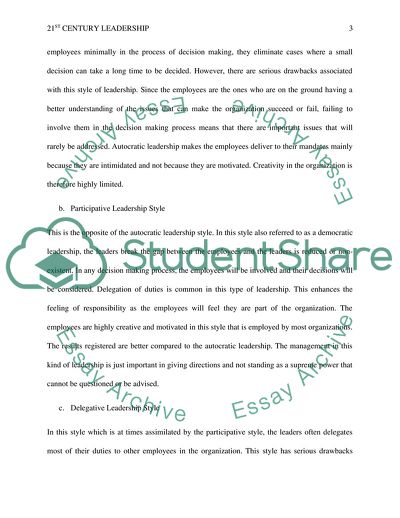Cite this document
(21st Century Leadership: Leadership Styles and Tactics Coursework Example | Topics and Well Written Essays - 1500 words - 1, n.d.)
21st Century Leadership: Leadership Styles and Tactics Coursework Example | Topics and Well Written Essays - 1500 words - 1. https://studentshare.org/human-resources/1879066-21st-century-leadership
21st Century Leadership: Leadership Styles and Tactics Coursework Example | Topics and Well Written Essays - 1500 words - 1. https://studentshare.org/human-resources/1879066-21st-century-leadership
(21st Century Leadership: Leadership Styles and Tactics Coursework Example | Topics and Well Written Essays - 1500 Words - 1)
21st Century Leadership: Leadership Styles and Tactics Coursework Example | Topics and Well Written Essays - 1500 Words - 1. https://studentshare.org/human-resources/1879066-21st-century-leadership.
21st Century Leadership: Leadership Styles and Tactics Coursework Example | Topics and Well Written Essays - 1500 Words - 1. https://studentshare.org/human-resources/1879066-21st-century-leadership.
“21st Century Leadership: Leadership Styles and Tactics Coursework Example | Topics and Well Written Essays - 1500 Words - 1”. https://studentshare.org/human-resources/1879066-21st-century-leadership.


